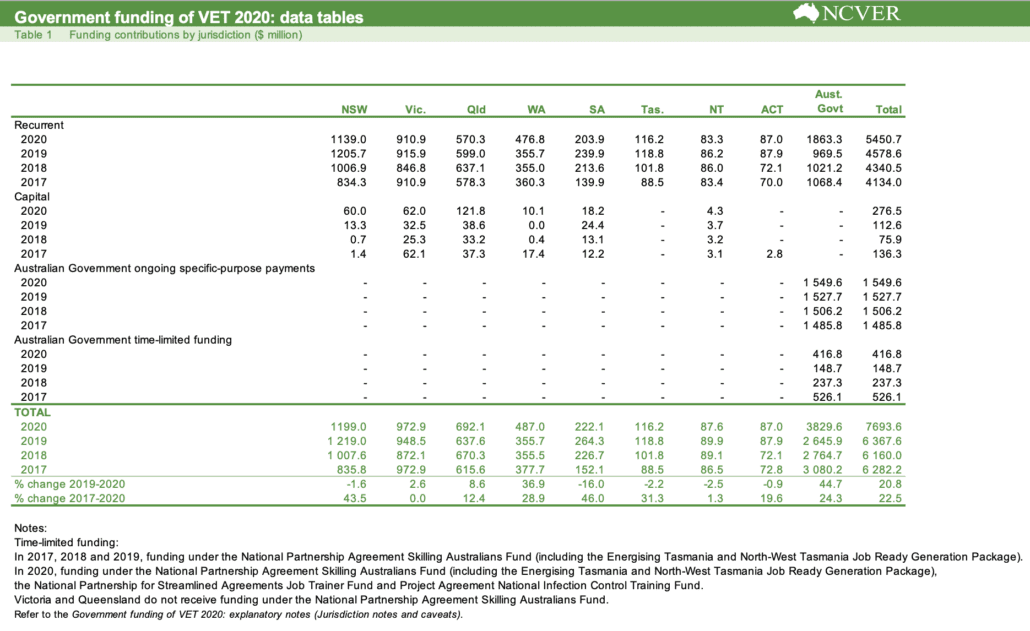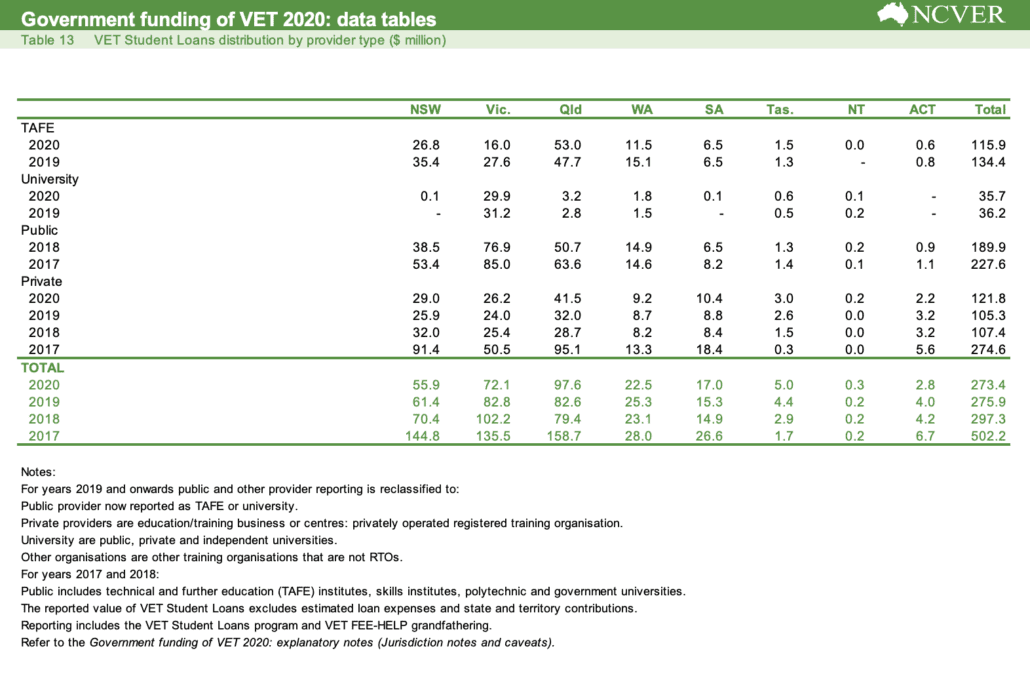The annual NCVER VET funding data for 2020 has just been released. The data shows there are wide variations by jurisdiction in the level of recurrent funding provided over the last four years.
- The New South Wales government increased their recurrent VET funding by 37% between 2017 and 2020 (but funding decreased by -6% between 2019 and 2020). In the other jurisdictions the shifts in recurrent funding were:
- Victorian funding up 0% from 2017 and -0.5% change from 2019
- Queensland funding down -1% since 2017, and down -4.8% on 2019
- Western Australia funding up 32% since 2017 and up 34% on 2019
- South Australia funding up 46% since 2017 but fell -15% on 2019
- Tasmania funding up 31% since 2017, but fell -2.2% on 2019
- Northern Territory funding down -0.1% on 2017, but fell -3.4% on 2019
- ACT funding up 24% on 2017, but fell -1.0% on 2019, and
- Commonwealth funding up 74% on 2017 and 92% on 2019.

The NCVER report also includes some interesting data on VET Student Loans funding, showing that the total amount of funding provided by the Commonwealth government has declined again this year.

There are also details on the share of loans going to state/territory government-subsidised VET students versus the amount paid to full-fee-paying students. The growth in loans has been to non-subsidised students.
And again there are interesting state/territory differences.
There has been a decline in NSW in the value of loans to both public and private providers. In Victoria and Western Australia there was a decline in loan funding to TAFE students (no doubt influenced by their ‘Free TAFE’ policies meaning fewer students need to pay student fees), while VSL loans to private providers in both jurisdictions went up modestly. In South Australia VSL funds to TAFE students were static but grew by 18% for students at private providers in the last 12 months.
There was a strong increase in loan funding to students at TAFE (10%) and private providers (30%) between 2019 and 2020 in Queensland – potentially suggesting fewer subsidies were made available for diploma level courses by the Queensland government in 2020, and hence providers and students were more reliant on the loan scheme.





